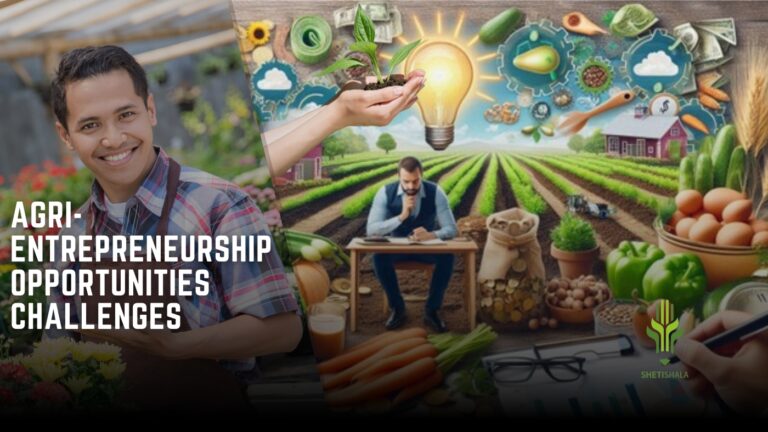Introduction
Biotechnology is a broad field that involves the use of living organisms, cells, and biological systems to develop products and technologies that improve human life and the health of our planet. It integrates various scientific disciplines such as biology, chemistry, physics, engineering, and computer science. Here’s a detailed overview of biotechnology. by Nikita Vidye.

Key Areas of Biotechnology
1.Medical Biotechnology:
• Pharmaceuticals:
Development of drugs and vaccines. Examples include recombinant insulin, monoclonal antibodies, and vaccines for diseases like hepatitis B.
• Gene Therapy:
Techniques that modify a person’s genes to treat or cure disease by correcting defective genes or introducing new genes.
• Regenerative
• Medical: Use of stem cells to repair or replace damaged tissues and organs.
• Diagnostics:
Development of advanced diagnostic tools and techniques, such as PCR (polymerase chain reaction) and ELISA (enzyme-linked immunosorbent assay).
2.Agricultural Biotechnology:
• Genetically Modified Crops:
Engineering crops for traits like pest resistance, herbicide tolerance, and improved nutritional content.
• Animal Biotechnology:
Techniques to enhance animal breeding, health, and productivity. This includes cloning and genetic modifications.
• Microbial Biotechnology:
Use of microbes for processes like fermentation, biopesticides, and biofertilizers.
• Plant Tissue Culture:
Techniques for growing plant cells or tissues in a controlled environment to produce clones of plants.
3. Industrial Biotechnology:
• Biofuels:
Production of renewable fuels like bioethanol and biodiesel from biomass.
• Bioplastics:
Development of biodegradable plastics from biological substances.
• Bioremediation:
Use of organisms to clean up environmental contaminants, such as oil spills and heavy metals.
• Enzyme Technology:
Production of enzymes for use in various industrial processes, including food processing, textiles, and detergents
4. Environmental Biotechnology:
• Waste Treatment:
Use of biological processes to treat wastewater and solid waste. farming, such as the use of biopesticides and biofertilizers.
• Conservation:
Techniques like DNA barcoding to monitor and conserve biodiversity.
Key Techniques and Tools
1. Genetic Engineering:
• Recombinant DNA Technology:
Inserting genes from one organism into another to express desired traits.
• CRISPR-Cas9:
A powerful and precise gene-editing tool used for modifying DNA sequences in genomes.

2. Molecular Cloning
– Techniques to create multiple copies of a DNA fragment for research and practical applications.
3. Polymerase Chain Reaction (PCR):
– A method to amplify specific DNA sequences, making it easier to study genes and diagnose diseases.
4.Cell Culture:
– Growing cells under controlled conditions for research, drug development, and therapeutic applications.
5. Fermentation:
– Use of microorganisms to convert organic compounds into products like antibiotics, alcohol, and vitamins.
6. Bioinformatics:
– Use of computational tools to analyze biological data, such as genomic sequences, protein structures, and metabolic pathways.
Applications and Impacts
1. Healthcare:
– Improved diagnostics, personalized medicine, new treatments for diseases, and development of vaccines.
2. Agriculture:
– Increased crop yields, improved resistance to pests and diseases, and enhanced nutritional content of food.
3. Industry:
– More efficient production processes, reduced environmental impact, and development of sustainable products.
4. Environment:
– Pollution control, waste management, and conservation of natural resources.
Ethical and Regulatory Considerations
Biotechnology raises important ethical, social, and regulatory issues. Key concerns include:
• Safety :-
Ensuring that biotechnological products and processes are safe for humans and the environment.
• Ethics:
Addressing moral questions related to genetic modification, cloning, and the use of animals in research.
• Access:
Ensuring that biotechnological advancements are accessible and affordable to all, especially in developing countries.
• Regulation:
Governments and international bodies establish regulations to oversee biotechnological research and applications, ensuring safety and ethical standards are met.
Application of Biotechnology in Agriculture :-
1. Genetically Modified Organisms (GMOs) have numerous applications in agriculture, leading to significant advancements in crop production and sustainability.
Some of the primary applications include:
1. Pest Resistance:
Crops are modified to produce proteins that are toxic to specific pests, reducing the need for chemical insecticides. For example, Bt corn produces a protein from the bacterium
*Bacillus thuringiensis* that is toxic to certain insect pests.
2 Herbicide Tolerance:
GM crops can be engineered to tolerate specific herbicides, allowing farmers to control weeds more effectively without damaging the crop. Roundup Ready soybeans are
an example, which are resistant to glyphosate, a
commonly used herbicide.
3. Disease Resistance:
Genetic modifications can make crops resistant to viral, bacterial, and fungal infections. For instance, the development of papaya resistant to the papaya ringspot virus
saved the papaya industry in Hawaii.
4. Enhanced Nutritional Content:
GMOs can be designed to have improved nutritional profiles. Golden Rice is an example, engineered to produce beta-carotene, a precursor of vitamin A, to
combat vitamin A deficiency in developing countries.
5. Drought and Salinity Tolerance:
Genetic modifications can help crops withstand extreme environmental conditions, such as drought or high soil salinity, enhancing food security in regions
prone to such stresses.
6. Improved Yield and Quality:
GMOs can be designed to increase crop yield and improve quality attributes, such as shelf life, taste, and texture. For example, genetically modified tomatoes
have been developed to have a longer shelf life and better taste.
7.Biofortification:
GMOs can be used to increase the content of essential vitamins and minerals in crops, addressing micronutrient deficiencies in human populations. This is particularly
important in areas where dietary diversity is limited.
8. Production of Pharmaceuticals:
Some GM crops are engineered to produce pharmaceutical compounds, such as vaccines and therapeutic proteins. These “pharma crops” have the potential
to provide cost-effective means of producing medicine
2.Marker-Assisted Selection (MAS) is a method used in agriculture to accelerate the breeding process by using molecular markers to select plants or animals with desirable traits. This
technique enhances the efficiency and precision of traditional breeding methods. Here’s a detailed look at the applications of MAS in agriculture:
Applications of Marker-Assisted Selection in Agriculture
1.Disease Resistance
• Identification of Resistant Varieties: MAS helps in identifying and selecting plants that carry genes for resistance to specific diseases, such as bacterial blight in rice or late blight in potatoes.
This leads to the development of disease
-resistant crop varieties.

• Pyramiding Resistance Genes: MAS allows breeders to combine multiple resistance genes (gene pyramiding) into a single variety, providing broader and more durable resistance to diseases.
2. Pest Resistance:
• Selection for Pest Resistance Traits: MAS can be used to identify plants with natural resistance to pests. For example, selecting for genes that confer resistance to the European corn borer in maize.
3. Improved Yield
Yield-Related Traits: MAS aids in selecting plants with genes that contribute to higher yield, such as improved photosynthesis efficiency, better nutrient uptake, and enhanced growth rates.
4. Quality Traits:
•Nutritional Content:- MAS helps in developing crop varieties with enhanced nutritional profiles, such as increased protein content in wheat or higher vitamin A content in rice (e.g., Golden Rice).
• Taste and Texture: Selection for genes that improve taste, texture, and shelf life of fruits and vegetables, leading to better consumer acceptance and reduced post-harvest losses.
5. Abiotic Stress Tolerance:
• Drought Tolerance: Identification and selection of genes associated with drought tolerance in crops like maize and wheat.
• Salt Tolerance: MAS helps in developing crop varieties that can thrive in saline soils, improving agricultural productivity in arid and semi-arid regions.
6. Hybrid Development:
• Heterosis (Hybrid Vigor): MAS can be used to identify and combine favorable alleles from different parent lines to create hybrids with superior performance.
• Hybrid Seed Production: MAS facilitates the development of parental lines with desired traits, ensuring the consistent production of high-quality hybrid seeds.
7. Accelerated Breeding:
• Reduced Breeding Cycles: By using molecular markers, breeders can select for desired traits at the seedling stage, significantly reducing the time required to develop new varieties.
• Precision Breeding : MAS allows for more accurate selection of traits, reducing the reliance on phenotypic screening, which can be influenced by environmental factors.
8. Genetic Diversity Preservation:
• Conservation of Wild Relatives: MAS can help identify and incorporate beneficial genes from wild relatives of crops into cultivated varieties, enhancing genetic diversity and resilience.
• Introgression of Exotic Traits: Using MAS, breeders can introduce exotic traits from wild or less commonly used varieties into mainstream crops without extensive backcrossing.
Examples of Marker-Assisted Selection in Agriculture
1. Rice:
MAS has been used to develop rice varieties with resistance to bacterial blight (e.g., using the Xa21 gene) and blast disease. It has also been used to enhance grain quality traits like amylose content
2. Wheat:
Selection for rust resistance genes, such as Sr2 for stem rust and Lr34 for leaf rust, has led to the development of rust-resistant wheat varieties.
3. Tomatoes:
MAS has facilitated the development of tomato varieties with improved resistance to diseases like fusarium wilt and nematodes, as well as enhanced fruit quality traits.
4. Maize:
MAS has been employed to improve resistance to pests like the European corn borer and to select for traits that increase yield and drought tolerance.
Tissue Culture:
Plant cells or tissues are grown in controlled conditions to produce clones of plants. This method is used for virus-free plants and rapid propagation of desirable varieties.
Tissue culture in agriculture involves growing plant cells, tissues, or organs in controlled, sterile conditions.

1. Clonal Propagation:
Producing large numbers of genetically identical plants from a single parent, ensuring uniformity in crops like bananas and orchids
2.Disease-Free Plants:
Generating virus-free plants by culturing meristem tissue, particularly useful for crops like potatoes and strawberries. Conservation: Preserving rare and endangered plant species by storing tissues or regenerating plants from small tissue samples.
3. Somatic Hybridization:
Fusing different plant cells to create hybrids with desirable traits, such as disease resistance or improved yield.
4. Germ plasm Storage:
Cryopreserving plant tissues for long-term storage, ensuring genetic diversity and future breeding potential. Tissue culture significantly accelerates plant breeding and production, enhancing agricultural productivity and sustainability. alteration of DNA in the genome. It’s used to create crops with specific traits like drought tolerance or disease resistance.
5. Biofertilizers and Biopesticides:
These are natural products used to enhance soil fertility and protect plants from pests and diseases, reducing the need for chemical inputs.
6. Synthetic Biology:
This field involves designing and constructing new biological parts, devices, and systems. In agriculture, it can be used to create plants with new functions, such as improved photosynthesis efficiency.
Conclusion
Biotechnology is a dynamic and rapidly evolving field that holds immense potential to address some of the world’s most pressing challenges. By harnessing the power of biology, biotechnology offers innovative solutions across a range of sectors, from healthcare and agriculture to industry and the environment. However, it also requires careful consideration of ethical and regulatory issues to ensure its benefits are realized safely .These biotechnological advancements contribute to increased agricultural productivity, sustainability, and food security.

for more such information visit our blogs – Classification of crop plants




